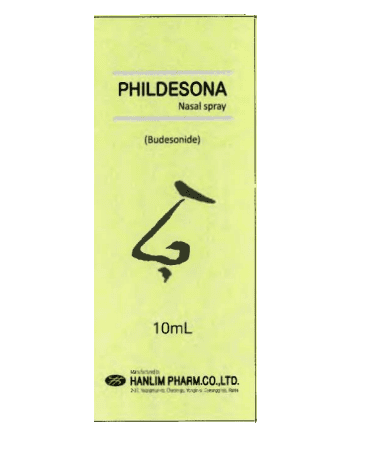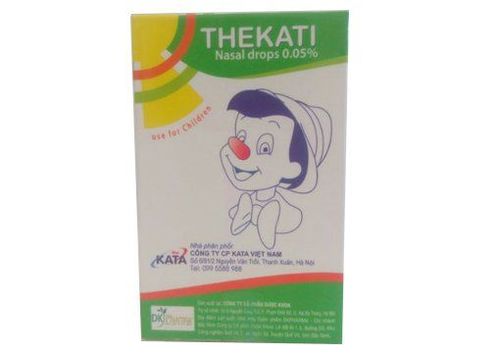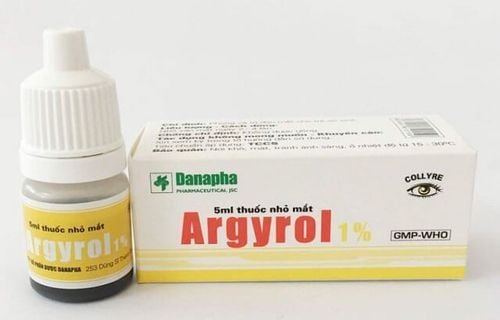This is an automatically translated article.
Nasal congestion, nasal pain is a very common symptom of a cold or sinusitis. At that time, using vasoconstrictor drugs will help the patient reduce this uncomfortable feeling. In some cases, the doctor will prescribe the patient to use Naphazoline nasal spray. So what is Naphazoline and how is it used?
1. What is Naphazoline?
Naphazoline is a vasoconstrictor, which narrows the blood vessels in the nasal area, thereby reducing swelling and reducing nasal congestion. Naphazoline constricts the vascular system by direct stimulation of alpha adrenergic receptors, temporarily reducing nasal congestion caused by the common cold, sinusitis, hay fever and allergies.
Thuốc xịt mũi Naphazoline giúp điều trị các triệu chứng của viêm xoang
2. How to use Naphazoline Nasal Spray
Patients need to use Naphazoline nasal spray as directed on the product packaging or use as directed by a doctor.
Accordingly, the patient should blow his nose gently before using the medicine, use 1 finger to seal the nostril on the side that does not spray, keep the head upright, put the spray head on one nostril, proceed to spray, and While inhaling through the nose, take a few strong breaths to make sure the medicine is deep in the nose, repeat these steps for the other nostril if needed. Avoid spraying in the eyes or directly into the nasal septum.
Rinse the spray head with hot water or wipe it with a clean tissue after each use. Make sure that water does not get inside the container. Finally, the cap should be closed after each use.
Note that Naphazoline nasal spray only works to relieve temporary discomfort, so do not arbitrarily use more sprays or use it for longer than directed by your doctor, as it may increase risk of side effects.
Also, do not use Naphazoline nasal spray continuously for more than 3 days, otherwise it may cause nasal congestion again. Symptoms of a stuffy nose include: prolonged redness and swelling inside the nose and more runny nose. If this happens, stop using Naphazoline and consult your doctor or pharmacist.
3. Naphazoline nasal spray side effects
Naphazoline nasal spray may cause temporary burning, stinging, dry nose, runny nose, and sneezing. If any of these side effects persist or get worse, tell your doctor or pharmacist right away.
Some unwanted side effects of Naphazoline drug are serious that the patient should immediately report to the treating doctor:
Slow or faster heart rate than usual, pounding heart; Dizzy; Nausea; Headache, mood swings; Difficulty sleeping; Run; Unusual sweating; Abnormal weakness. Very serious allergic reactions to Naphazoline are very rare, but are still possible, in which case patients need to seek immediate medical attention. Severe allergy symptoms include: rash, itching, swelling (especially face swelling, tongue swelling, throat swelling), severe dizziness, trouble breathing.

Khó ngủ là một tác dụng phụ của thuốc xịt mũi Naphazoline
4. Measures to prevent unwanted drug effects
Before using Naphazoline nasal spray, tell your doctor or pharmacist if you have a history of allergic reactions to Naphazoline or to other sympathomimetic drugs (eg pseudoephedrine), or any allergies other.
If the patient has any of the following health problems, consult a doctor or pharmacist before using the product:
Heart disease, vascular disease; overactive thyroid gland (hyperthyroidism); Diabetes; High blood pressure ; Difficulty urinating (due to an enlarged prostate gland). Before surgery, tell your doctor or dentist if you are using Naphazoline nasal spray. Naphazoline should be used with caution in children, who tend to be more sensitive to the side effects of the drug. Consult a doctor or pharmacist before use in children.
During pregnancy, Naphazoline nasal spray should only be used when absolutely necessary and the risks and benefits of the drug must be weighed. There are currently no studies on whether the drug passes into breast milk, so consult your doctor before giving it to a nursing mother.

Bệnh nhân tiểu đường khi sử dụng thuốc cần sự chỉ định của bác sĩ
5. Naphazoline drug interactions
Taking MAO inhibitors with Naphazoline can cause serious drug interactions (possibly fatal). Therefore, avoid taking MAO inhibitors (isocarboxazid, linezolid, moclobemide, phenelzine, procarbazine, rasagiline, safinamide, selegiline, tranylcypromine) while being treated with Naphazoline.
Most MAO inhibitors also should not be taken within 2 weeks prior to treatment with Naphazoline. Ask your doctor when to start or stop taking Naphazoline. If you are currently taking any of the medicines listed above, tell your doctor or pharmacist right away before you start taking Naphazoline nasal spray.
Similarly, it is necessary to fully report to the doctor or pharmacist of all prescription, over-the-counter or herbal products that the patient is taking, especially antihypertensive drugs (guanethidine), tricyclic antidepressants (amitriptyline).
To ensure health and avoid side effects, patients need to follow the instructions of the doctor and pharmacist advising on drug use.
Please dial HOTLINE for more information or register for an appointment HERE. Download MyVinmec app to make appointments faster and to manage your bookings easily.
Reference source: webmd.com













